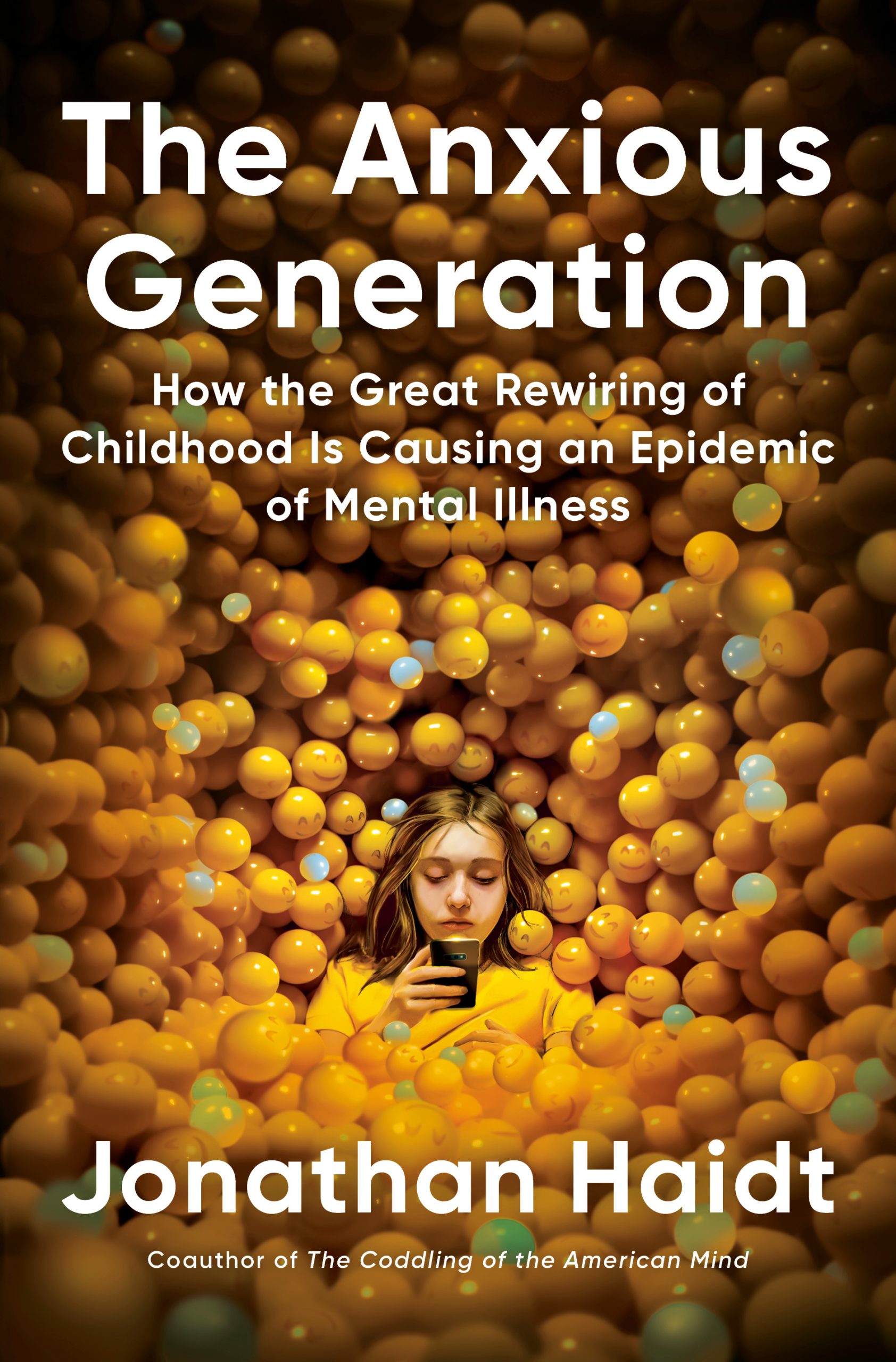
Jonathan Haidt’s The Anxious Generation: How the Great Rewiring of Childhood Caused an Epidemic of Mental Illness is one of the most important and unsettling nonfiction books of our time. Backed by extensive data and research, it offers a clear-eyed examination of how the digital transformation of childhood has led to an alarming rise in depression, anxiety, and self-harm among young people.
In this #1 New York Times bestseller, Haidt argues that the early 2010s marked a pivotal turning point: the moment when the “play-based childhood” that allowed previous generations to develop independence, resilience, and real-world social skills was replaced by a “phone-based childhood.” Children’s free play and face-to-face interactions gave way to endless hours online, where validation is measured in likes and views, and social comparison is constant.
The Collapse of Mental Health in the Smartphone Era
Haidt paints a disturbing picture of how the digital environment has reshaped young minds. Rates of anxiety and depression among adolescents more than doubled after 2010, and the data are consistent across multiple countries. He traces this mental health crisis to the explosion of smartphones, social media, and hyper-connectivity that rewired the brain during its most vulnerable developmental stages.
Social media, Haidt argues, is not just correlated with mental illness—it is a direct cause. By design, platforms like Instagram and TikTok reward emotional extremes, perfectionism, and constant self-presentation. For girls, this manifests as relentless self-comparison, body image obsession, and cyberbullying. For boys, it often leads to withdrawal into gaming, pornography, and digital isolation. In both cases, the result is disconnection from reality, stunted social growth, and chronic anxiety.
Discovery Mode vs. Defend Mode
One of the book’s most compelling insights is Haidt’s distinction between “discovery mode” and “defend mode.” During discovery mode, children explore, take risks, and learn how to navigate relationships and emotions through real-world play. Defend mode, on the other hand, is triggered by fear, threat, or social pressure—and according to Haidt, smartphone culture keeps kids locked in this anxious, reactive state. When children grow up constantly on alert, monitoring likes and messages, their brains adapt to a world of stress rather than exploration.
A Call to Action for Parents and Society
Haidt’s solutions are simple but radical: no smartphones or social media before age sixteen, and phone-free schools where children can rediscover the lost art of play and in-person connection. He also urges families and communities to restore “shared sacredness” through spirituality, nature, and moments of collective awe—antidotes to the digital shallowness that dominates modern life.
Critiques and Limitations
While Haidt’s research is persuasive and his tone urgent, not all readers agree with his conclusions. Some critics, like Beck on Goodreads, have called out sections of the book that touch on gender identity and “social contagion” as being poorly sourced and insensitive to transgender communities. Others, like author Wick Welker, acknowledge the strength of Haidt’s evidence but challenge his portrayal of “helicopter parenting,” arguing that safety-conscious parents are not the enemy.
Despite these disagreements, The Anxious Generation succeeds as both a warning and a wake-up call. It does not merely lament what has been lost; it offers a clear roadmap toward restoring balance, connection, and humanity in a wired world.
Final Thoughts
This is a must-read for parents, educators, and anyone concerned about the psychological toll of technology on the next generation. Haidt’s message is both chilling and hopeful: we can reverse the damage—but only if we act now.
If you care about the future of our children, this book deserves a spot on your shelf.
👉 Buy The Anxious Generation on Amazon


